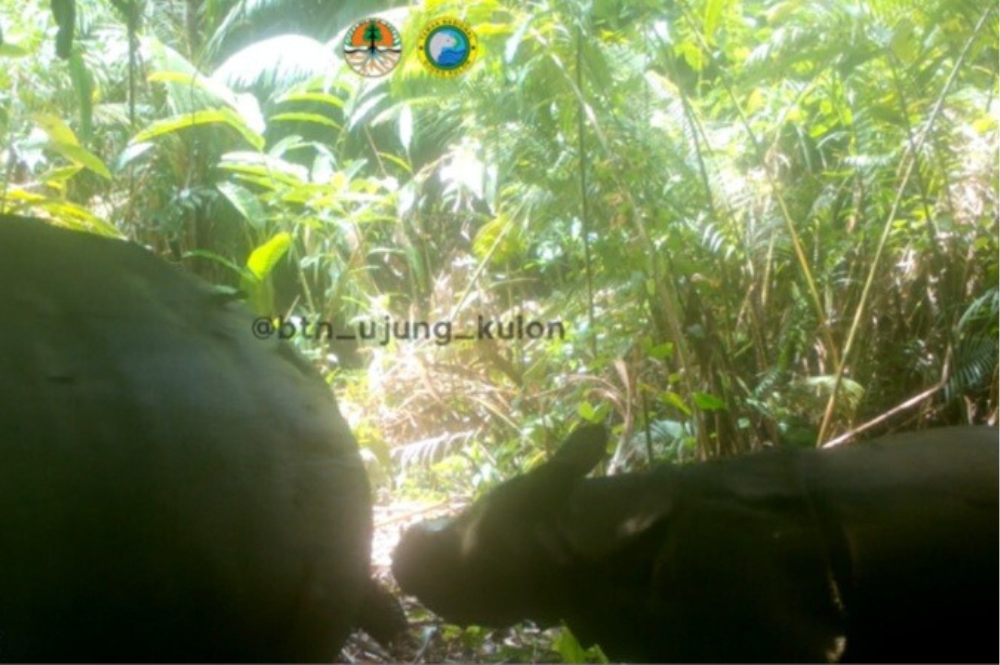Image courtesy of the Indonesian Ministry of Environment and Forestry.
On 6 April 2024, the Government of Indonesia announced that a new Javan rhino calf was captured alongside its mother on a remote camera trap in the Ujung Kulon National Park (UKNP) on 4 March.
With fewer than 80 individuals remaining on Earth, this exciting new addition is the first calf recorded so far this year and follows the discovery of a female calf first seen in July 2023. Estimated to be between just three and five months old, the sex of this latest calf is yet to be determined, however, both the mother and calf appeared to be in good health. Indonesia’s Director General of Natural Resources and Ecosystem Conservation, Satyawan Pudyatmoko, was overjoyed to hear the news, sharing that his organisation would continue supporting vital monitoring efforts in the Park.
Despite this positive discovery, the situation facing Javan rhinos remains critical. Once found across South-east Asia, the latest figures submitted to CITES in 2022 estimated that only 76 individuals of the species are remaining, and they are confined to a ~300km² peninsular on the very western tip of the Indonesian island of Java. Monitoring teams and Rhino Protection Units (RPUs) work tirelessly to patrol the forests, rivers and shorelines where Javan rhinos roam, keeping watchful eyes on this precious rhino population through camera traps and documenting signs such as footprints and dung.
As well as looking out for rhino signs, RPUs and monitoring teams also record evidence of human disturbance and illegal activities, such as incursions to the park or poaching events within UKNP. With so few Javan rhinos remaining, the species is particularly vulnerable to such threats. Unfortunately, during 2023, there was a rise in reports of illegal incursions into the Park and it was reported that the Government was also investigating the unnatural death of a Javan rhino.
Aside from human disturbances, the Javan rhino must contend with a multitude of other threats, including; diseases carried by domestic livestock living on the Park’s fringes; habitat change brought about by the succession of the Arenga palm, an invasive species that chokes out the rhinos’ preferred food plants; and, potentially, predation of calves by the likes of the Javan dhole.
In addition, Indonesia has more active volcanoes than any other country and houses some of the world’s most famous volcanoes. UKNP lies in the shadow of Anak Krakatoa, a large volcano to the north-east that formed following the eruption of the Krakatoa volcano in 1883, causing tsunamis that inundated the peninsula and killed more than 36,000 people. It is likely that the rhinos living there at the time were also eradicated, meaning that those alive today are descended from the few that recolonised the area sometime after the eruption. As the genetic diversity of this remnant population is very low, inbreeding depression another serious risk to their future.
Whilst we celebrate every birth, we cannot afford to be complacent given the breadth and scale of the challenges facing Javan rhinos. As Satyawan Pudyatmoko said, “…we and all parties who help in efforts to preserve the Javan rhinoceros must not be careless and always anticipate any threats that may occur.”









